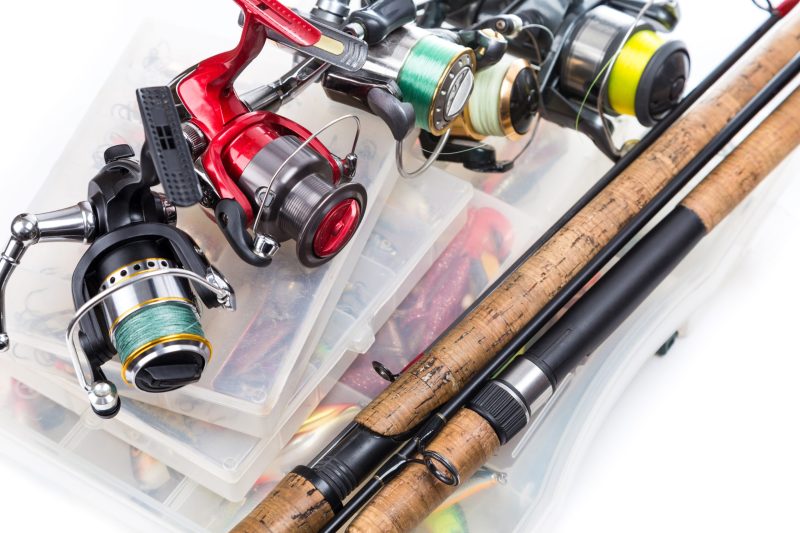Upgrading Your Fishing Equipment

Upgrading Your Fishing Equipment
There really are three things that you need to consider when it comes to upgrading your fishing equipment. Whether you are ice fishing or on open water. Includes the rod, the reel, and the type of fishing line you will use. As many of you can attest, we all start somewhere, and it’s usually with some sort of combo setup.
A rod and reel that the manufacturer feels will meet your need as best as possible, based on the type of fishing you will do. However, as we learn more about fishing, the lures we use, and the fish we chase after, we become increasingly aware that we need to make some upgrades. So what should those be, and in what order? The order is probably debatable and up to personal preference, so I’ll sort out what process I would consider going with.
REEL
While the rod provides the backbone of your fish-catching experience, the reel allows you to play the fish and bring it to the surface. For ice fishing, upgrading to an inline fishing reel is your best option. One thing that we’ve all learned over time is that a spinning reel will introduce line twist.
As you lower your bait into the water column, that little jig starts spinning. In many cases, fish will quickly lose interest, at least those nearby, as it comes down. Inline fishing reels have eliminated that issue. Since it is a level wind system, the line spools off the reel in the same manner as it comes up. These look like fly fishing reels, and I’m sure they were the inspiration for the design. Overall, they truly have worked wonders in getting rid of line twists.
My first was a Frabill straight-line fishing reel, a very early design where the reel seat was close to the rod and hard to “palm” while fishing. Upgrades in the reel stem, adding some length to allow the angler to hold the rod and reel in the all too familiar ice fishing hold, have eliminated that issue.
Recently, I upgraded my ice rods with the Clam® Gravity Elite Inline Hybrid Reel. These come in left- and right-hand retrieves and have been a great addition to my ice-fishing arsenal. The ergonomic design weighs about 7oz and has a highly efficient and adjustable drag system. Another new addition is the 13 Fishing® inline fishing reel picked up last year at the end of the season. We’ll put this to the test this year! These inline fishing reels are great for panfish.
For those who chase after bigger quarries like northern pike and lake trout, a spinning reel with a high-quality drag system that will hold a lot of line will be your best option. You’ll want something stout that can withstand some of the runs that lake trout or northern pike make and provide you with a good gear ratio to reel in that line. Abu Garcia Max Ice Spinning Reel is robust with a compact design for ice fishing with a 5.2:1 gear ratio.
13 Fishing also has a well-designed ice fishing reel for northern pike and lake trout, the Wicked, treated with Defrost Lubricant for consistent performance in bone-chilling temps.
ROD
This is the next crucial part of your upgrades. And really, it’s dependent on what type of fishing you’ll be doing. If you’re an angler who chases after panfish for the most part, then you’ll want ultra-light to medium rods with fast tips. One of the best I’ve used has been the Jason Mitchell Dead Meat Rod, 28-inch medium. The solid fiberglass blank and the sensitive bite detection tip works very well in most conditions, aggressive fish or finicky. Another favorite has been the Straight Drop Rod from Clam Outdoors. Paired this with an inline reel with light line, and it is impressive on days when the fish develop lockjaw. Sometimes, the fish will feed up, and you’ll notice your line going slack as they take the bait. Having rods with sensitive tips will aid in bite detection and hook sets.
Rods used for lake trout and larger northern pike need to be stout. These are slightly longer than regular ice rods and will help with the hook set, especially in deeper water. There’s the benefit of more shock absorption for fighting the fish as well. Especially when you’re battling to get the fish’s head in the hole. Medium-heaving to heavy-action rods are the best.
LINE
There is a fantastic variety of ice fishing lines on the market today, and honestly, it is usually a personal preference. Line size depends on the fish you’re chasing and how little or how much you’re concerned about the fish seeing your line. Light line down to 2 pounds is common among anglers looking to ice a few crappie, perch, or bluegill. Though it’s always fun to hook into that rebel largemouth bass that grabs your offering. Rigging your reels with braid for those larger predators will help bring them topside, though I’ve never used it. One comment I’ve heard about braid is that it can freeze to the reel or on itself in very cold temps, especially if you’re using a baitcasting style reel. Just something to keep in mind.
Overall, the sky is the limit as far as upgrading your fishing equipment. Do some research and check to see what your budget can handle. Ice fishing is one of the Midwest’s greatest outdoor activities; every angler who heads out truly enjoys it. Be safe on the ice and Tight Lines All!
By Ben Leal
February 2025
Here is another article based on fishing
or if you are looking for the Digital Version of this issue here you are –
Looking for the Cattle/Dairy side of things?

